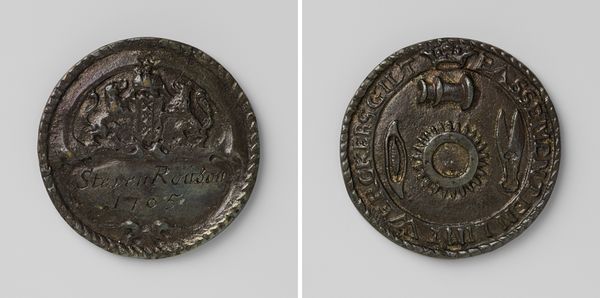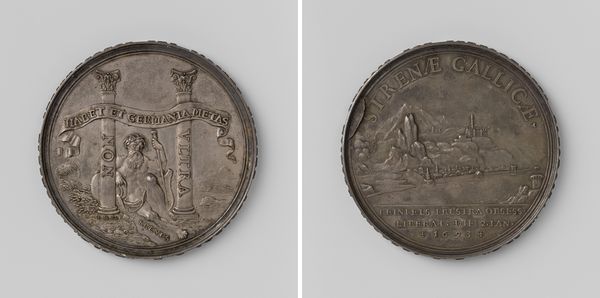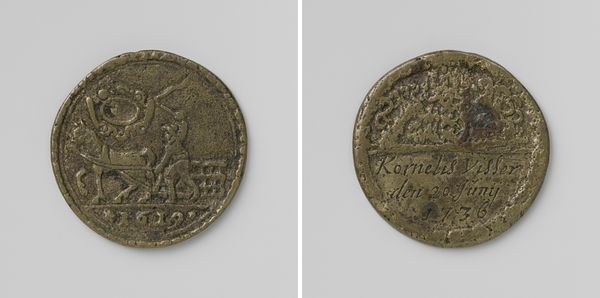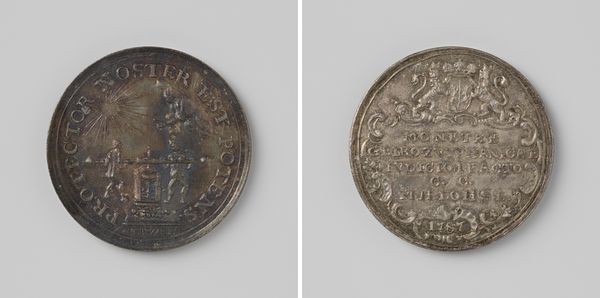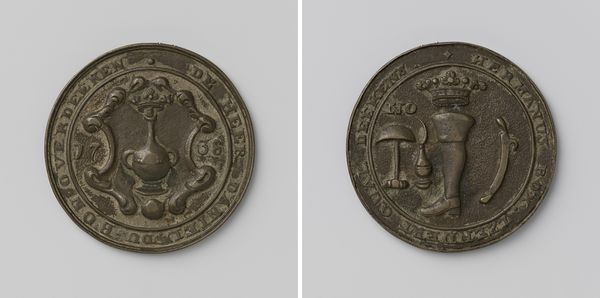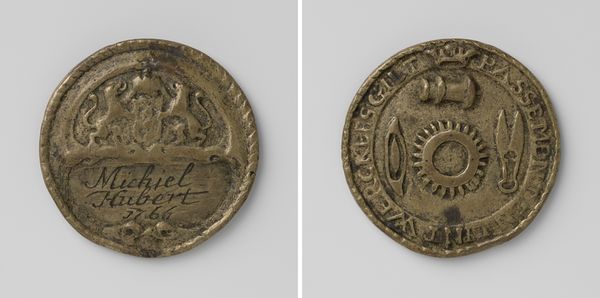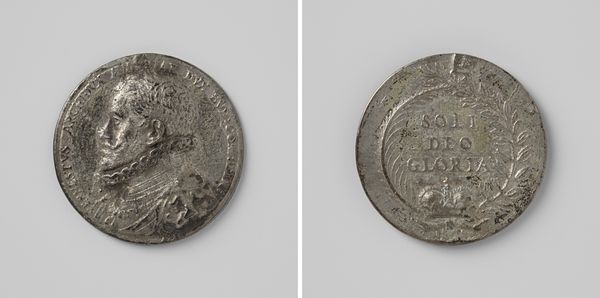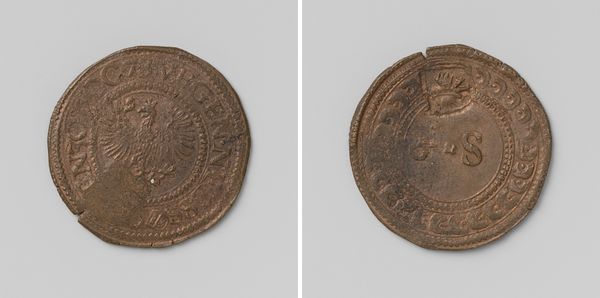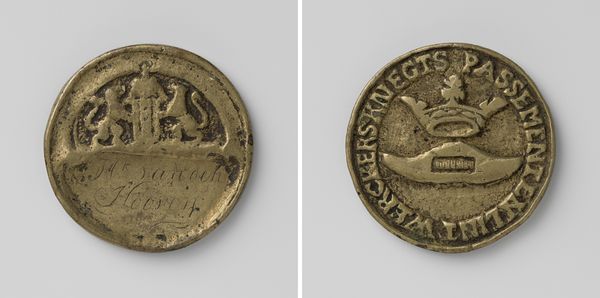
Dimensions: diameter 3.6 cm, weight 23.28 gr
Copyright: Rijks Museum: Open Domain
Curator: Here we have the 'Smidsgilde van Amsterdam', a guild badge crafted in 1792 by Frans Burger. It's a bronze relief. Editor: The patination is remarkable! It gives a rich, tactile quality to what seems like a very symbolically dense design. Curator: Absolutely. Guild badges like this served as visual representations of the organizations themselves. The decorative arts in the Netherlands saw this as a point of power to their guilds. Editor: Precisely, guilds were deeply embedded within the social and economic fabric of Dutch society. Curator: We can see here how that manifested materially. Badges like this validated a guild's identity and displayed it. Editor: Note the detailed composition. A variety of blacksmith's tools arranged symmetrically, around which is an inscription of "Bloeijende Gilt". Visually balanced, and harmonious. It evokes a feeling of precision, and order, don't you think? Curator: Indeed. Consider that each tool included also references the knowledge, power, and skill necessary to perform certain actions, or, to participate within this group. We can further examine the lion crest, it is indicative of their authority. Editor: Yes! Notice the almost calligraphic flow of the text on either side? And then it circles everything, containing these otherwise disparate elements in one, unified piece. It gives this powerful sense of formal enclosure. Curator: Think also how something like this might have been used – perhaps worn on ceremonial occasions, or displayed within the guild hall. Editor: I’m stuck on its composition; so balanced and resolved. Curator: Studying this piece underscores how intertwined art, craftsmanship, and social structures were. Editor: A compelling argument. Seeing the unity within it has really highlighted the level of planning the artwork received, making this dialogue truly rewarding.
Comments
No comments
Be the first to comment and join the conversation on the ultimate creative platform.

